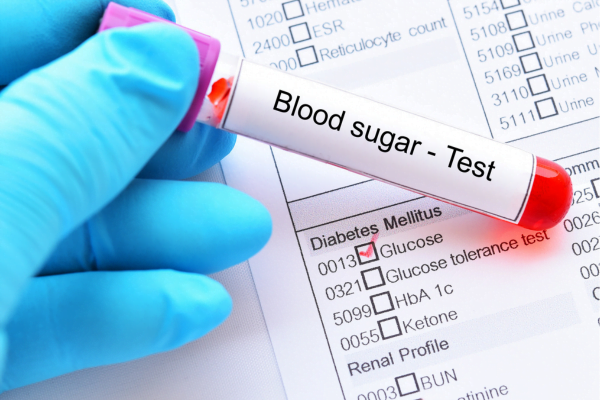Health journeys often come with warning signs, and one such sign is impaired glucose tolerance (IGT), a condition that quietly influences the path towards Type 2 diabetes. While prediabetes often takes center stage in discussions about diabetes prevention, the role of IGT is equally crucial yet receives less attention. In this article, we’ll explore the connection between IGT and Type 2 diabetes, shedding light on its significance and providing insights to aid in effective management and prevention strategies.
Understanding Impaired Glucose Tolerance (IGT) and Type 2 Diabetes
Impaired Glucose Tolerance (IGT) is a medical condition characterized by elevated blood sugar levels that exceed normal levels but do not reach the threshold for a diabetes diagnosis. Doctors diagnose IGT through a glucose tolerance test, where they measure your blood sugar levels after you consume a specific amount of glucose. According to the American Diabetes Association, IGT is identified when blood sugar levels fall between normal and diabetic ranges during this test.
Conversely, Type 2 diabetes is a persistent health condition marked by elevated blood sugar levels due to either the body’s inefficient utilization of insulin or the pancreas’s inadequate production of insulin. It is the most common form of diabetes, comprising the majority of diabetes cases worldwide.
The Link Between IGT and Type 2 Diabetes
Understanding the relationship between impaired glucose tolerance (IGT) and type 2 diabetes is vital for managing health effectively. IGT serves as a pivotal stage, indicating elevated blood sugar levels that fall short of a diabetes diagnosis but signal a potential risk. This intermediate phase demands attention because if left unaddressed, IGT can evolve into type 2 diabetes over time.
Several underlying factors contribute to this transition, including insulin resistance, where the body’s cells become less responsive to insulin’s blood sugar-regulating effects, and impaired pancreatic function, which affects insulin production or release. As a result, individuals diagnosed with IGT are at a higher susceptibility to developing Type 2 diabetes than those with normal glucose tolerance.
In a study published in BioMed Central, researchers investigated what factors could predict the development of IGT (impaired glucose tolerance) and T2D (type 2 diabetes) among healthy first-degree relatives (FDR) of people with T2D. They studied 138 non-diabetic FDRs with an average age of 40.5 years over 5.6 years. During this time, 19 individuals developed IGT, and 4 progressed to T2D. The researchers found that those who developed IGT or T2D had higher levels of fasting plasma glucose, glucose levels at 120 minutes in oral glucose tolerance tests (OGTT), HbA1c, and lower insulin sensitivity compared to others.
Several factors predicted the worsening of glucose tolerance, including family history, glucose levels during OGTT, and gender. These findings underline the importance of insulin resistance and beta-cell dysfunction in the development of IGT and T2D among genetically predisposed individuals. Early identification of these predictors could assist in the implementation of preventative strategies aimed at delaying or averting the outcome of Type 2 diabetes in individuals at elevated risk.
Your Role in Managing IGT Progression
Several factors contribute to the progression of impaired glucose tolerance (IGT), and your lifestyle choices play a significant role in this journey. Poor dietary choices, including excessive consumption of processed or sugary foods and beverages can impair your body’s ability to regulate blood sugar levels effectively. If you’re overweight or obese, this further exacerbates the problem, increasing the likelihood of developing IGT.
Genetics also play a part in your risk. If you have family members with diabetes or a history of diabetes in your family, you may be more predisposed to developing IGT. Additionally, other medical conditions, like high blood pressure or polycystic ovary syndrome (PCOS), and certain medications can also influence IGT progression, highlighting the multifaceted nature of this condition’s development.
Your Path to Screening, Diagnosis, and Management
Screening for impaired glucose tolerance (IGT) encompasses several tests designed to detect abnormal blood sugar levels. These tests include the oral glucose tolerance test and the fasting plasma glucose test.
If diagnosed with IGT, lifestyle changes become crucial in managing and preventing its progression. Incorporating a well-rounded diet rich in fruits, vegetables, and whole grains, fueled with regular physical activity, can enhance blood sugar management. Your healthcare professional may also recommend medications to help manage IGT and reduce the risk of developing diabetes.
By taking proactive steps towards lifestyle modifications and adhering to medical advice, you can effectively manage your IGT and lower the risk of complications associated with diabetes. It’s essential to prioritize your health and take control of your journey towards better glucose tolerance levels and overall well-being.
Frequently Asked Questions (FAQs)
What are the complications of untreated IGT?
If left untreated, IGT can progress to Type 2 diabetes. Additionally, IGT is associated with an increased susceptibility to cardiovascular disease, mainly heart attack and stroke. Therefore, it is essential to manage IGT through lifestyle changes and, if necessary, medical interventions to prevent these complications.
What is impaired fasting glucose?
Impaired fasting glucose (IFG) characterizes a condition where blood sugar levels surpass the typical range but do not meet the criteria for a diabetes diagnosis. It is similar to impaired glucose tolerance (IGT) in that they both indicate a risk for developing diabetes. However, they differ in the timing of blood sugar measurement: IFG is diagnosed based on elevated fasting blood sugar levels. In contrast, IGT is diagnosed after consuming glucose during a glucose tolerance test. Both IFG and IGT underscore the importance of lifestyle changes to prevent the progression of diabetes.
What is glucose intolerance?
Glucose intolerance refers to the body’s inability to properly process and regulate glucose (sugar) levels in the bloodstream. It typically manifests as consistently elevated blood sugar levels after consuming carbohydrates. Glucose intolerance symptoms may include frequent urination, increased thirst, blurred vision, fatigue, and slow wound healing. This condition can be a precursor to conditions like prediabetes and Type 2 diabetes.
Doctor’s Recommendation
A glucose tolerance test is a key method for diagnosing Impaired Glucose Tolerance (IGT). Here’s how it works:
- First, a healthcare provider takes a blood sample.
- Then, you drink a sugary liquid containing about 75 grams (g) of glucose.
- After drinking the liquid, blood samples are taken every 30 to 60 minutes to monitor changes in your blood sugar levels.
- Another blood sample is taken 2 hours later, sometimes even up to 3 hours later.
- If you have IGT, your blood sugar levels 2 hours after drinking the glucose solution may range from 140 to 199 milligrams per deciliter (mg/dL) during this oral glucose test.



